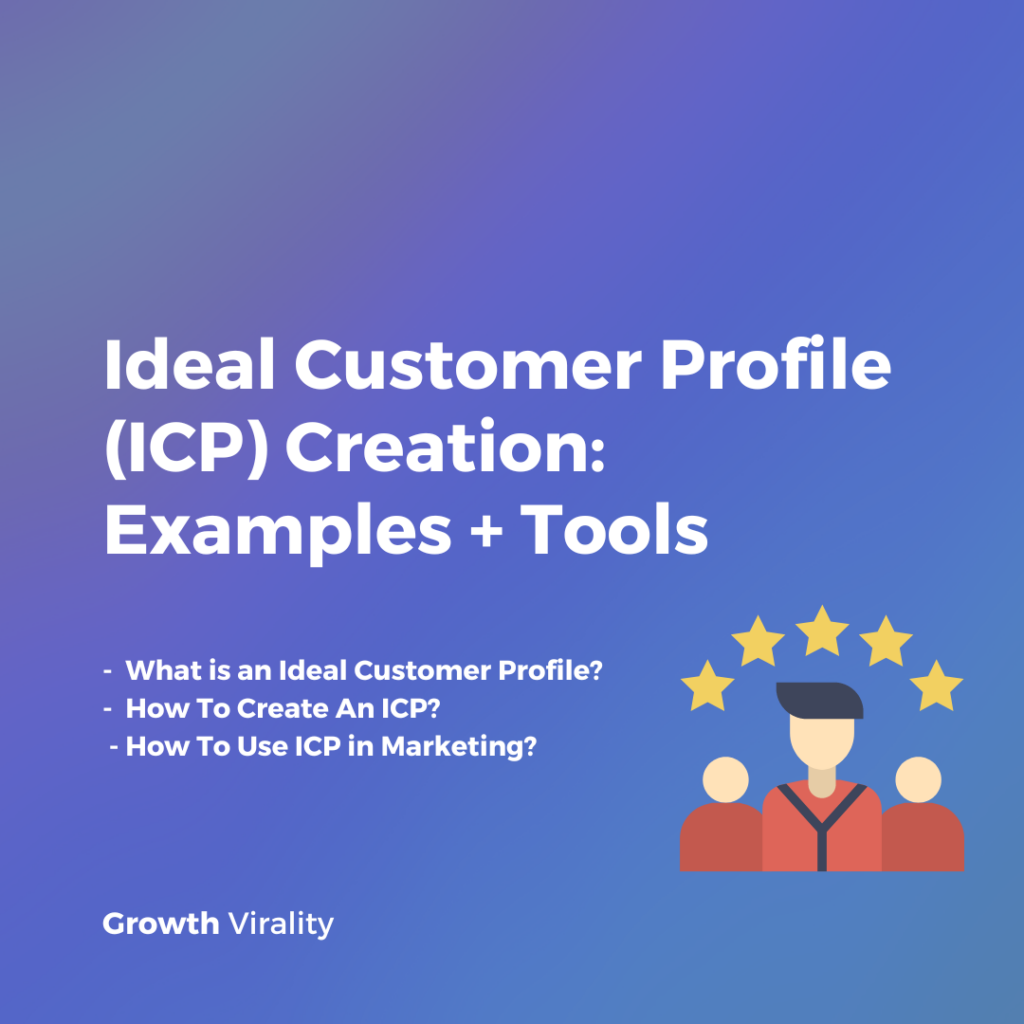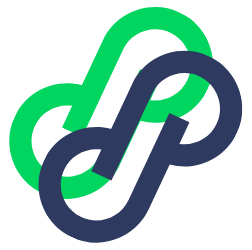Having an ideal customer profile (ICP) is crucial for B2B businesses because it helps them understand the buying behavior of the customers.
BY having an ideal customer profile, you can easily create targeted marketing campaigns to improve your advertising returns on investments.
This article will discuss:
- What is an ideal customer profile?
- Ideal customer profile vs buyer persona
- Why is having an Ideal customer profile important?
- How to create an ideal customer profile?
- Which are the top tools to quickly create your ideal customer profile?
- How to use the ideal customer profile in your marketing campaigns?
Let’s begin!
Key Takeaways:
- An ICP includes demographic, firmographic, psychographic, behavioral, and pain point information about your ideal customer.
- It differs from a buyer persona as it focuses on the organizational level for businesses, while the buyer persona targets individuals.
- Having an ICP is essential for B2B businesses as it enables precise targeting, efficient resource allocation, personalized messaging, improved conversion rates, reduced churn, enhanced product development, competitive advantage, and scalability.
- Creating an ICP involves gathering and segmenting existing customer data, identifying high-value customers, creating detailed customer personas, and documenting the ICP’s key attributes.
- Tools like Bant.io can automate the ICP creation process by analyzing existing customer data.
- To use the ICP in marketing campaigns, personalize content, select appropriate channels, develop targeted campaigns, craft tailored messages, distribute content through chosen channels, and offer personalized incentives.
What is an Ideal Customer Profile?
An ideal customer profile or ICP is a detailed description of an ideal customer. It contains:
- Demographic information
- Firmographic details (for B2B businesses)
- Psychographic traits
- Behavioral patterns
- Specific pain points or needs
Here is how an ideal customer profile looks like:
Example Ideal Customer Profile For A B2B SaaS Business
Here is a sample customer profile for a SaaS company:
- Company Type: Small to medium-sized businesses (SMBs) in various industries, such as IT, marketing agencies, and consulting firms.
- Company Size: 20 to 500 employees.
- Job Titles: Targeting primarily Project Managers, Team Leads, and Operations Directors.
- Geographic Location: Primarily focused on North America and Europe, with plans to expand to other regions.
- Industry Focus: Industries that require efficient project management, including technology, marketing, consulting, and creative services.
- Revenue Range: Annual revenues ranging from $1 million to $50 million.
- Challenges: Businesses facing challenges with project planning, resource allocation, and collaboration among remote teams.
- Tech-Savviness: Customers who are comfortable with cloud-based software and value scalability and accessibility.
- Key Pain Points: Prioritizing projects, tracking progress, optimizing resource allocation, and ensuring effective communication among team members.
- Goals: Streamline project workflows, increase team collaboration, improve project tracking and reporting, and ultimately achieve better project outcomes.
- Budget: Able to allocate a budget for a subscription-based project management solution.
- Buying Cycle: Typically a decision-making process that takes 2-3 months, involving a demo, trial period, and evaluation by multiple stakeholders.
Also See:
- 35+ Growth Hacking Tools Every Marketer Should Try Once
- Best Growth Newsletters For Startup Entrepreneurs
- 60+ Most Powerful Growth Hacking Chrome Extensions
Ideal Customer Profile vs Buyer Persona
Many marketers get confused between ideal customer profile and buyer persona. The major difference between customer profile and buyer persona is that the customer profile focuses on the companies, while the buyer persona focuses on the individuals.
Here are the key differences between an customer profile vs a buyer persona:
| Aspect | Ideal Customer Profile (ICP) | Buyer Persona |
| Focus | Targeted at the organizational level, defining the ideal business customer for a product or service. | Targeted at the individual level, representing a fictional character that embodies the characteristics of a typical customer. |
| Scope | Broad and comprehensive, covering key business attributes, industry, company size, goals, and challenges. | Specific and detailed, including personal information, demographics, behavior, preferences, and pain points. |
| Purpose | Guides marketing and sales efforts by identifying the right businesses to target, ensuring alignment with the company’s offerings. | Aids in crafting personalized marketing messages and content to engage with individual customers effectively. |
| Audience | Typically used by B2B organizations to segment and target businesses or organizations as customers. | Commonly used in both B2B and B2C settings to understand and empathize with individual customers. |
| Use Cases | Helps identify businesses that match the company’s ideal customer criteria, leading to more effective lead generation and conversion. | Assists in creating tailored content, campaigns, and messaging to resonate with specific customer segments. |
| Key Elements | Company size, industry, revenue, challenges, goals, tech-savviness, budget, buying cycle, geographic location. | Personal information, demographics, behavior, preferences, pain points, goals, objections, and motivations. |
| Benefit | Improves the efficiency of targeting and engaging with businesses that are more likely to convert into customers. | Enhances the ability to connect with individuals on a personal level, leading to higher customer satisfaction and loyalty. |
| Examples | – Ideal customer: Mid-sized marketing agencies in North America with revenue between $5-20 million. – ICP helps SaaS companies identify businesses that align with their software’s features. | – Buyer persona: “Marketing Manager Mary” – Represents a fictional marketing manager who values data-driven solutions and seeks to streamline her team’s workflow. – Helps marketers create content that resonates with individuals like Mary. |
Why Is An Ideal Customer Profile So Crucial For B2B Businesses?
An ideal customer profile is valuable for B2B brands because it offers the following advantages:
- Precise Targeting: An ICP helps businesses pinpoint the specific type of customers who are most likely to benefit from their products or services. This precision ensures that marketing and sales efforts are directed towards the right audience, saving time and resources.
- Efficient Resource Allocation: By defining the characteristics of ideal customers, companies can allocate their resources effectively. They can focus on marketing channels and strategies that resonate with their ICP, resulting in a higher return on investment (ROI).
- Personalized Messaging: An ICP allows businesses to tailor their marketing messages and content to address the unique needs, pain points, and preferences of their ideal customers. This personalization increases the likelihood of engaging and converting prospects.
- Improved Conversion Rates: When marketing efforts are aligned with the ICP, conversion rates tend to improve. This is because the ICP represents the most receptive audience, making it easier to convert leads into paying customers.
- Reduced Churn: Customers who closely match the ICP are more likely to be satisfied with the product or service, leading to reduced churn rates. A well-defined ICP helps in retaining valuable customers.
- Enhanced Product Development: Understanding the ICP’s needs and challenges can guide product development and innovation. This ensures that products are designed to address the specific requirements of the ideal customer group.
- Competitive Advantage: Companies with a well-defined ICP can position themselves as experts in serving their target audience. This can give them a competitive advantage in the market.
- Scalability: An ICP provides a scalable framework for growth. As a business expands, it can continue to target new customers who fit the ICP criteria, maintaining a consistent approach to customer acquisition. I
How to Create an Ideal Customer Profile?
Creating an Ideal Customer Profile (ICP) involves a structured process that helps you identify and define the characteristics of your most valuable and desirable customers. Here’s a step-by-step guide on how to create an ICP:
Step 1: Gather & Segment Existing Customer Data
Collect and analyze data from your existing customer base. Look at demographics, firmographics, purchasing behavior, and any other relevant information. This forms the foundation of your ICP.
Divide your customer data into different segments based on similarities. These segments might include industry, company size, job titles, geographic location, and more. Segmentation helps you identify patterns and trends.
Step 2: Identify High-Value Customers
Determine which customer segments are the most profitable and provide the highest lifetime value to your business. These are the customers you want to prioritize in your ICP.
Conduct market research to gather information about potential customers who resemble your high-value customers. This can include surveys, interviews, and data analysis to identify common traits.
Step 3: Create Detailed Customer Personas
Develop detailed customer personas for each segment within your ICP. A persona is a semi-fictional representation of your ideal customer, including demographics, goals, challenges, and preferences.
Understand the pain points and goals of your ideal customers. What problems are they trying to solve, and what outcomes are they looking to achieve by using your product or service?
Also, examine the buying behavior of your high-value customers. How do they make purchasing decisions? What factors influence their choices? Use this insight to refine your ICP.
Step 4: Document Your ICP
Create a comprehensive document that outlines the key attributes and characteristics of your ICP. Include demographic details, pain points, goals, and any other relevant information.
Pro Tip: Automatically Create An Ideal Customer Profile
Once you have all the data, you can use Bant.io to automatically create an ideal customer profile.
Bant.io allows users to analyze their ideal customer profile by uploading a list of their existing clients.
Here’s how it works:
- Upload a List of Customers: Upload a CSV file containing a list of your current customers. The tool requires a minimum of 50 websites and 50 emails to create a report.
- Analysis Process: Once the customer list is uploaded, it will process the data to identify common characteristics and attributes among the existing clients.
- ICP Report: The tool then generates a report that outlines the ideal customer profile based on the analysis. This profile includes key details about the types of customers or businesses that align with the existing client base.
Also See:
- Best Amazon Product Research Tools
- How To Set Dynamic Pricing? Best Examples To Follow
- Top Social Media Contest Tools
- Top User-Generated Content Examples For Your Inspiration
How to Use the Ideal Customer Profile in Your Marketing Campaigns?
Here are the top ways to use ICP in your marketing campaigns:
Content Personalization
Tailor your marketing content and messages to align with the specific needs, pain points, and preferences of each segment. Create content that speaks directly to their challenges and offers solutions.
Channel Selection
Determine which marketing channels are most effective for reaching each segment. For example, some segments may respond better to email marketing, while others prefer social media or webinars.
Campaign Development
Create targeted marketing campaigns for each segment. Develop campaign themes, messaging, and creative assets that resonate with the unique characteristics of each group.
Message Crafting
Craft compelling messages that highlight how your product or service addresses the specific pain points and challenges of each segment. Use language and examples that resonate with their industry or role.
Content Distribution
Use the selected channels to distribute your content and messages to the corresponding segments. Ensure that your content is delivered where your ideal customers are most active.
Personalized Offers
Customize your offers and incentives based on the needs and preferences of each segment. This can include tailored discounts, promotions, or exclusive content.
Need More Marketing Tips? Join The Growth Virality Newsletter
Get weekly marketing tips delivered straight to your inbox, plus exclusive access to our thriving community of over 4,200 growth marketers. Don’t miss out on the latest strategies and tools to boost your business. Subscribe now and ignite your growth journey!

